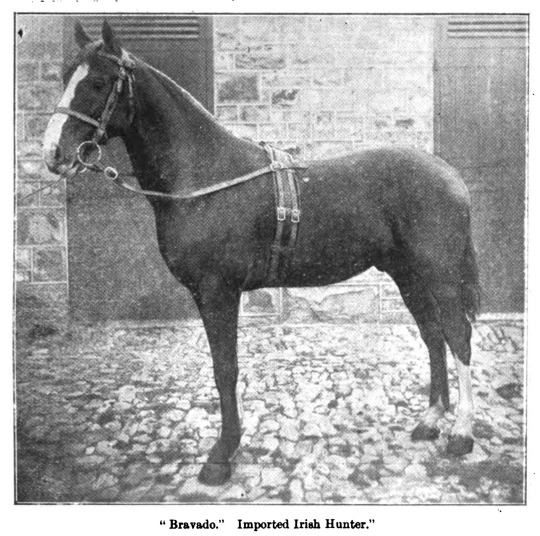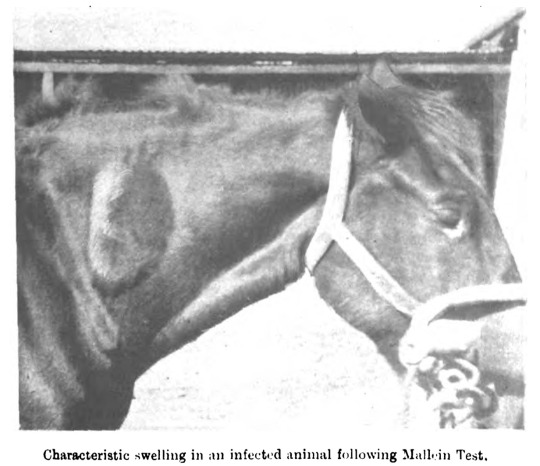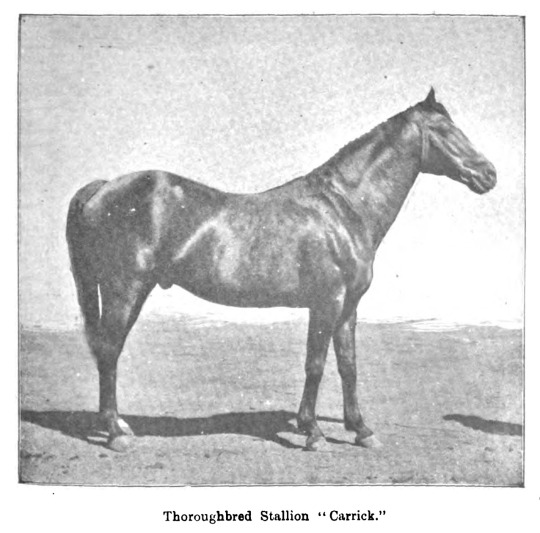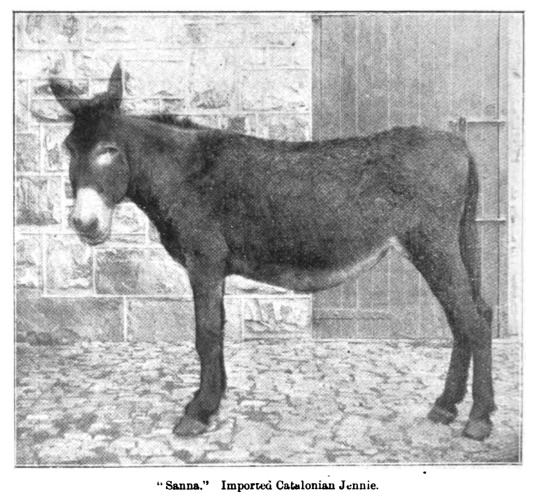#The Agricultural Journal of the Cape of Good Hope
Text

"Bravado." Imported Irish Hunter.
The Agricultural Journal of the Cape of Good Hope, Vol. 33, July - December 1908
21 notes
·
View notes
Text
Journal 4 - Food Forest
The food forest is a student-led organization that connects different individuals to their outdoor environment and hosts a variety of projects involving gardening, composting, and other ecologically friendly things like building sustainable areas around the forest from recycled materials. It was fun to see all the different leaves, trees, fruits and vegetables that were growing around us, and getting to learn specifically about each of their benefits was fascinating. On the first stop, we got to see a papaya tree, papayas are high in vitamin C have antimalarial and cancer effects and can even be used as a natural contraceptive. We talked a bit about the landscape of the food forest and other typical agricultural practices like monocultures and plantations around the world. For monoculture, they use one major crop for a vast area and that depletes nutrients a lot faster than if you were to create a diverse area of differing plants. At least the varying species will be taking in different resources, to a certain degree. Sunlight and water yes, but different relationships can be created that allow nutrient and resource recycling to one another. Trees providing shades and habitats, sequestering carbon and certain grass plants providing nutrients for different fruiting plants and soil. They are all interconnected systems that in a way, help one another some times, and that is when the healthiest ecosystems grow. Permaculture is the practice of incorporating these innovate designs that allow for interconnecting relationships and mutualistic behavior that benefits all the species living in that location. Simply by planting various different plants, that coincide with one another, it creates a habitat and area for animals and human beings to grow with nature. Gardening your own food can help with the amount of processing and shipment it takes for people who buy from Walmart or Publix. This helps cutdown on greenhouse gas emissions, and you are also helping Mother Earth by fostering healthy ecosystems in your own area. I am not sure where the rules are by Cape Coral, but I really want to start a community garden, or a garden in my own home, where I can plant and use my own fruits/vegetables. Social sustainability is incorporated throughout the food forest, there are benches, under passes, and beautiful views all throughout the food forest. There are even paved trails for you to go around and explore. Structures were typically built with recycles materials, and the whole area was built by the students. It was really calming to walk through the trail and breathe the fresh air and scents of the plants. To be outside in itself is nice, but in nature surrounded by healthy growing fruits and vegetables, it’s incredibly healing for the soul. if more people had access to this, it could help their mental health in a lot of ways. I learned that banana trees are actually not trees but a species of grass, which is really cool. We got to smell some cool leaves, lemon bay rum smelled like sweet lemon candy. We saw a mulberry, even though it was out of season...and I had no idea those particular berries were mulberries and edible, so that’s good to know now. They had so many different plants that I could explain but we would be here very long. To sum this journal up, I was amazed by the though process that went behind the placement and planting of each species. They had the trees with more necessity for sun, providing a canopy for the plants that needed more shade throughout certain parts of the day. Not only that, there were plants that were next to each other because of mutualistic purpose. One plant would provide nutrient cycling for the others plants, like the sunshine mimosa, which resembles a Horton Hears a Who flower, purple and fluffy. It is nitrogen fixing, so it protects the topsoil of the ecosystem and provides a stable base for the plants growing in the forest. Interesting enough, it can respond to the touch of a human hand, but if pet multiple times it will recognize a scent and move less to conserve energy (super intelligent for a plant!). You can tell there was a lot of thought, time, love and care put into this forest, and it’s the beginning of something beautiful. I hope to come here more often and provide ideas myself for some future ventures that could be possible like hydroponic systems that are economically friendly, and planting new things that may be beneficial to the environment overall. Anyway, I was so grateful to have gotten the chance to walk through this amazing place, and I hope to get involved in the upcoming semester for some service learning projects.






:)
0 notes
Text
Read It For The Pictures 27: Skyward by Lee Garbett and Joe Henderson

NK: Hello and welcome to Read It For The Pictures, the comic book Blog where we read it for the pictures! I’m Neil Kapit, and with me as always is my preferred cane toad dealer, Dave Clarke! How you doin’ Dave?
DC: I’m doing good, it’s a brand new day, the sun is shining and I didn’t have to read a DC book this week
NK: Yes, in a welcome change of pace we're not doing one of those New Age of Heroes books, and instead are doing Skyward #1, written by Joe Henderson with art by Lee Garbett and coloring by Antonio Fabella
DC: There are so many assumptions in superhero books that skyward throws off. For one, the world is the star of this book, not some brand new hero. And this feels like it has an ending it mind. Maybe after 6 or 12 issues. Why don’t you tell the reader what the premise is and if you agree with that reading? Why don’t you tell the reader what the premise is and if you agree with that reading?
NK: I think corporate owned superhero comics are in such a uniquely stunted and atavistic place that things we think would be Storytelling 101 seem like radical departures there. I hope that our discussion of this comic doesn’t devolve into us complimenting it only as a way to backhand DC.
DC: 50/50 chance it will, but let’s try to stay focused.
NK: Anyway, Skyward is a story of a world where Earth's gravity dramatically decreased one awful day 20 years ago. The protagonist is Willa, a young courier in a Chicago literally tied together by cables that people grab onto so they don't fling into the stratosphere. Her mother died from this when she was a baby and her father has understandably been protective of her, urging Willa not to venture outside their city. Willa, of course, isn't deterred.

DC: Yeah, I think it’s more of a zero gravity than low gravity scenario but I was able to keep my pedantry in check. The biggest thing that stands out about this is how the low (or no) g environment is communicated in static images.
NK: Willa's long, bushy hair is used effectively to indicate not only her own motion, but the upwards direction towards which everyone is falling. Everyone is consistently rendered in context of this almost zero gravity, but Willa's design stands out in a way that comics can uniquely display.
DC: It’s the same logic as Superman’s cape which is used to show the direction he’s travelled in. And yes, I will be lashing myself in penance for bringing up DC again.

NK: As one of the five people who played the Playstation Vita game Gravity Rush, I've seen this used in an animated medium, but it works better here because the eye can linger on it, as opposed to just being a welcome but minor detail amidst all the anime shenanigans
DC: There’s also a few examples of liquids in zero g, which I’m not sure makes a lot of practical sense for the world but it’s a cool visual so I’ll let it slide.

NK: Lee Garbett has mostly done superhero and 2000 AD books before this, but has proven himself an exceptional storyteller. This script, which takes place in a fully three dimensional perspective beyond what we encounter in most of our daily life, presents a unique challenge but he rises to it.
DC: Can’t help but think that mirrors edge had some influence on how this world was conceived.

NK: I've not played the console Mirror's Edge but Willa's life seems a lot happier. She's definitely a cheerful character who, having known nothing but this low-g world, is able to appreciate it better than those who remember being safely stuck on the ground. Her reactions help make this world interesting, not just horrifying.
DC: Yeah, it’s interesting how they paint this zero g world as having both positive and negatives, more positives really if I think about it .
NK: Edison, the co-worker Willa has a (badly concealed) crush on, is missing his legs, so he certainly has reason to appreciate the lack of gravity
DC: It almost seems like this is just going to be a slice of life comic in a weird world, but a sci-fi plot rears it’s head in the final pages. Not sure how I feel about that, maybe would have just been fun to have vignettes of how society adapted to no gravity (agriculture comes to mind). But I’m sure we’ll get a few more clever ideas like that, Garbett. is good at filling out a world in the background while still telling a clear effective story.
NK: Also note that everyone is covered with cables and tethers, which are almost always rendered in spot blacks. It's a conceit of this world that they have to literally tether themselves to something heavy, and I think it serves to ground the reader's viewpoint as well because we're spoiled with our sheltered two-dimensional movement planes
Also, the final page twist is that Willa's father Nate, a scientist who seems to have known about what caused the gravity breakdown, also has an idea on how to fix it. But since Willa's mother died it's implied that he's completely shut down, becoming a recluse who needs Willa to financially support him Well, the final page twist is that Willa's father Nate, a scientist who seems to have known about what caused the gravity breakdown, also has an idea on how to fix it. But since Willa's mother died it's implied that he's completely shut down, becoming a recluse who needs Willa to financially support him. And we can assume that Willa isn't 100% on board with the idea, much less what will be needed to get the gravity fixed
DC: He’s also doing muscle train exercises, a weird neat little touch cos no gravity would atrify your muscles and he’s planning to live in a world with gravity again. Writer must have a lot of trust in the artist to communicate so much of the world wordlessly.
NK: Given how the characters zip across the city in all directions, their bodies withering upon adjusting to the lowered gravity doesn't seem to be a major concern for anyone else. But I get my knowledge from the scientific journal of Super Mario Galaxy, where fire can be thrown underwater
DC: As much as I think this is a well realized world with lots interesting stuff to explore and built in conflict told in an elegant way I feel a should at least say one negative thing. This is an awkward shot.

NK: Not enough to make too much of a difference. The fact that this world takes place considering directions most of us don't bother with makes occasional perspective gaffes like her rather large head negligible when it's already stretched beyond most artists' conceptions of 3-D space
DC: This character is maybe too cartoony for the rest of the comic. But maybe I’m nitpicking now

NK: When I subject you to the Challengers of the Unknown reboot next time you'll be begging to go back to this, tethering yourself to the floating fat woman as you're adrift in DC Universe nonsense.
DC: Oh dear, and just when I was trying to find the dark horse catalogue to get in first with our next comic.
NK: You can no more rely on that than these characters can rely on their gravity, when cast adrift in a world of characterless IP whose own histories spin off into the aether at a moment's notice.
DC: Who’s the one viewing this book too much through the lens of DC now. Anyway, I heartily recommend skyward
NK: Petard, meet hoist. Basically one of the main appeals of comics is their limitless nature, bound only by the imagination and ability of the artist. Superheroes thrive in such a medium but are not limited to it, anymore than comics are limited to superheroes. Drawing supers probably helped Garbett develop the exact skills needed for this comic, so I do have to acknowledge and respect that.

DC: Catch you next week, when we do the anniversary of a legendary franchise with quite a lot of Power
0 notes
Link
This article examines the transition of the Dutch East Indian Company (VOC) from a policy of self-defense into its full espousal of large-scale privateering and plundering. I argue that this shift was driven by both economic and political factors, and can be traced to the very formation of the Company as a unified trading venture. The taking of prizes became a cornerstone not only of the economic fortunes of the company, but the establishment of the Dutch colonial empire in Asia. Of particular interest is not only the instructions emanating from the company directors and the Dutch government in the metropolis, but especially the implementation and adaptation of these directives on the ground. It is this local context that adds a crucial dimension to interpretations of the eager espousal of maritime violence by the VOC and its agents in Asian waters.
Peter Borschberg. "From Self-Defense to an Instrument of War: Dutch Privateering Around the Malay Peninsula in the Early Seventeenth Century." Journal of Early Modern History, Volume 17, Issue 1, pages 35 – 52.
The late-nineteenth and early-twentieth-century Dutch maritime and naval historian Johan Elias observed that the Republic began to dispatch fleets after 1599 under instructions to despoil the enemy in waters of the Americas, around Africa, and naturally also Asia. He explained the reorientation from a policy of self-defense toward despoliation of the enemy with reference to the poor financial health of the Dutch Admiralty Boards. The taking of prize and booty emerged at the dawn of the seventeenth century as a noteworthy source of income for the Dutch navy and the state. How much the Boards actually reaped overall from the earliest privateering activities is difficult to reconstruct as the revenues generated for the company from such activities are deeply embedded within the tenuous accounting category "balance of payments."
[...]
The resolution of November 1603 not only marked a major shift in policy for the VOC, but also set the cornerstone for the establishment of the Dutch colonial empire in Asia. It did so by not only uniting the pioneer companies into a formidable commercial monopoly, but also by transforming them into an instrument of war and colonial expansion that was directed against the Iberian powers in Asia and later, of course, also against local Asian rulers and polities. What Van Oldenbarnevelt and the Gentlemen States General perhaps could not foresee—or did not wish to acknowledge—^was that the Dutch company would inevitably become bogged down in defense and military infrastructure spending. These financial commitments not only seriously compromised the VOC's capacity to generate profits, but importantly failed to ensure an adequate return on investments, much to the chagrin of its participation (shareholders, stakeholders). Charged with projecting the war against Spain and Portugal east of the Cape of Good Hope, the VOC acquired after 1602/3 die habit of petitioning the Dutch States General and the Admiralty Boards for defense subsidies. The squeeze on profits and available capital arising from the seemingly bottomless pit of defense and infrastructure spending in Asia could only serve to enhance the pressures on fleet commanders to compensate with yet more prize taking raids on the Iberian enemies and especially also their Asian allies. The escalation of violence in Asian waters—especially in the region around the Singapore and Melaka Straits—was thus almost pre-programmed. Concluding the first part of this paper, it can be said that the VOC was created with a twin objective in mind: engaging in legitimate trade in the East Indies but also waging war on behalf of the Dutch Republic east of Cape of Good Hope. This marked a significant departure from the formal commissions and patents issued to captains sailing under the flags of the predecessor companies. In practice however, instructions to resort to force only in self-defense had already been broadly ignored or at least very generously interpreted.
[...]
As I have previously argued in a paper on the developments leading up to implementation of the Twelve Years Truce in Asia in the period between 1608 and 1610, the Dutch came to cast a wary eye on certain strategically and commercially important regions around insular and peninsular Southeast Asia. They came to understand that these regions were ruled by petty rajas who possessed and exercised full rights of sovereignty over structurally weak and sometimes geographically far-flung polities.'^ The Dutch regarded these weak polities and their (minor) rulers as inherently vulnerable to Iberian political and commercial advances, and thus as likely candidates to be attracted to the Iberian world order in Southeast Asia. By the time the truce talks in Europe had reached an advanced stage, the regions and polities most in danger of being forcefully—or even peacefully—drawn into the orbit of Iberian interests had crystallized, and instructions from Europe pointed to the Malay Peninsula (specifically Johor) and Sumatra, the Bandas, the Moluccas, Timor as well as southern India.'' These commercially and strategically important areas are what I have called frontline regions. Between 1608 and 1609, die VOC rushed to conclude as many contracts with rulers and polities situated in these frontline regions as possible.''' By contrast, the large land-based and agriculturally strong polities, especially on mainland Southeast Asia such as Burma (Pegu) and Siam, and then also the kingdom of Mataram on Java, were not seen to be under threat from Iberian advances.
The second point concerns how the Dutch began to recognize the strengths and weaknesses of the Portuguese Estado da India. Although in the opening years of the seventeenth century the Dutch only imperfectly grasped the complexity of the Estado's legal foundations and administrative structures, they did acknowledge that the political, commercial, and military node established in Goa offered substantial advantages in comparison to the VOC's operations which at that time still functioned without a base in Asia." The company was thus compelled to maintain excessively long, unbearably cosdy, and highly unreliable lines of communication between Europe and Southeast Asia. By the early 1600s, Dutch admirals came to recognize that the Singapore and Melaka Straits represented the metaphorical Achilles heel of the Estado da India. They incisively concluded that, if one could gain actual geographic control over the Straits, strategic communication and trade between the far-flung ports of the Estado could be severed. This would have impeded trade and ultimately deprived the Portuguese of the taxation revenues required to sustain their politico-military engagements across Asia. The Straits and the area surrounding it on the Malay Peninsula and Sumatra, and specifically the Portuguese-held emporium of Melaka, emerged as one of the preferred hunting grounds of the Dutch privateers.
Commandersoperating under the flags of the pioneer companies had already indulged in acts of anti-Portuguese violence around the Peninsula. Within a period of five years between 1600 and 1605, the Dutch (with the cooperation of the English on one occasion) attacked and plundered Portuguese merchantmen in the Melaka Strait. Heemskerk took the Santa Catarina in the Singapore Strait, and Wijbrandt van Warwijk seized the Portuguese carrack Santo Antonio while the ship was riding at anchor in Patani Roads. Additional, smaller commercial craft inbound form Borneo, Java, Solor, and Timor were seized near Pedra Branca at the eastern entrance of the Singapore Strait as well as in the waters off Tioman in the South Ghina Sea.
[...]
When the ordinary sailors and mates learned that the company directors had issued instructions to attack Portuguese interests and targets, they protested to the point of mutiny, arguing that they had been hired as sailors and traders, and not as warriors to engage the enemy in battle or, indeed, hand-to-hand combat. This posed some serious problems not only to Van der Hagen, but significantly also to the commander of the next fleet. Admiral Cornelis MatelieflFde Jonge, who set sail from the Netherlands in 1605. The protests by the members of the crew are of special interests to the topic of privateering, as any successful plundering raised questions about the size and portion of the booty to be conceded to the crew. Customarily, the mates of merchant vessels who had successfully engaged in privateering exercises received a share amounting to 6.3 percent of the registered value.'* This was then divided into shares or portions and distributed among the officers and ships' mates according to their status aboard the vessel(s).
The instructions issued by the Gentlemen Seventeen to Admiral Van der Hagen contained specific commercial as well as military objectives. After passing the Cape of Good Hope, he was to ply the same waters frequented by the Portuguese carracks between Europe and India. He attacked enemy positions in Mozambique and sought to impose a blockade on Goa, albeit with little tangible success. He harassed Portuguese shipping along the Malabar Coast, treated with the Zamorin of Calicut, founded the Dutch factories at Masulipatnam and Nizampattam and proceeded to the Spice Islands where he rather effortlessly snatched the island of Ambon from the Portuguese in 1605.
0 notes
Text

"Pasha." Imported Arab Stallion.
The Agricultural Journal of the Cape of Good Hope, Vol. 33, July - December 1908
19 notes
·
View notes
Photo


Above: Characteristic swelling in an infected animal following Mallein Test.
Below: Further view of similar case after Mallein Test.
The Agricultural Journal of the Cape of Good Hope, Vol. 27, July - December 1905
13 notes
·
View notes
Photo

“Pet Slave.” Imported thoroughbred Stallion.
The Agricultural Journal of the Cape of Good Hope, Vol. 33, July - December 1908
18 notes
·
View notes
Photo

Thoroughbred Stallion “Carrick.”
The Agricultural Journal of the Cape of Good Hope, Vol. 27, July - December 1905
8 notes
·
View notes
Photo

“Victor.” Colonial-bred Stallion.
The Agricultural Journal of the Cape of Good Hope, Vol. 33, July - December 1908
8 notes
·
View notes
Photo

“Sanna.” Imported Catalonian Jennie.
The Agricultural Journal of the Cape of Good Hope, Vol. 33, July - December 1908
6 notes
·
View notes
Photo

Thoroughbred Stallion “Leisure Hour.”
The Agricultural Journal of the Cape of Good Hope, Vol. 27, July - December 1905
7 notes
·
View notes